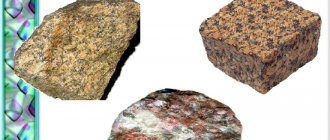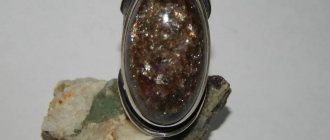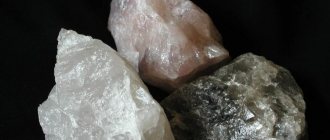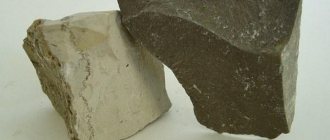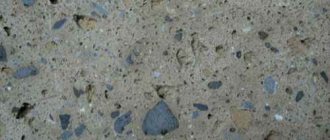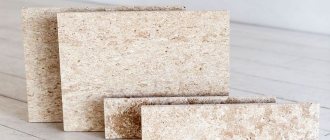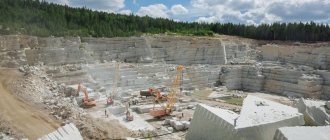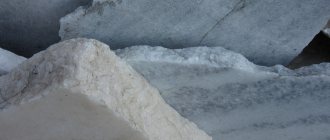Granite is a stone of natural origin. It is mined in many places on our planet and there is a possibility that it is not found on other planets of the solar system. Therefore, granite is called “the calling card of the Earth” in different sources. This is one of the most durable breeds in the world. Granite contains most of the known minerals: feldspar, quartz, as well as mica formations of various origins.
Is granite a mineral or a rock? This question is often asked by people who are just beginning to be interested in geology and mineralogy. At its core, it is a rock. As already mentioned, it includes different minerals, and its composition is heterogeneous, in contrast to minerals (for example, quartz, amethyst, chrysolite), which are uniform in both structure and color.
The granite rock is ubiquitous in our lives: in the form of railway embankments, tombstones, wall cladding, street elements of decorated decorations. Granite products have long seemed to people the most common and familiar to the eye. Often we just pass by without focusing on how different this amazing stone can be. Those who wish can get to know it better: after all, few people think about what granite is made of and what the history of its origin is.
How did granite come about?
It is generally accepted that there are two natural ways by which this natural stone was formed. It could have arisen from molten magma (solidified volcanic lava). Deep in the earth's crust, magma slowly cools and turns into a fossilized structure, in which granite grains of different sizes crystallize over millions of years. It is no coincidence that its name itself comes from the Latin word “granum”, which means “grain”.
Natural stone granite is formed in nature in another way. Sedimentary rock, as well as clay-like sand and various types of stones, were gradually displaced through tectonic processes into the depths of the earth's crust. There, under the influence of high temperatures and pressure, substances melted and a process such as granitization .
Most granite formation occurs in so-called collision areas. Two continental plates collide with each other, causing an increase in the layer of crust on the continent. Many scientists believe that it is as a result of the thickening of the collision layers of the crust that layers of granite melt appear - at a depth of 10 to 20 km. This phenomenon is called granitic magmatism . It is most typical for Andean batholiths, as well as for island arcs.
Theories of rock formation
The problem of granite formation is still the subject of scientific controversy. And the point here is not what minerals granite consists of, but the places of its formation and the conditions conducive to the emergence of such structures. By default, granite is classified as igneous rock, that is, its formation is, one way or another, associated with ancient volcanism and solidification of magma.
During volcanic activity in anhydrous conditions, basalts are formed, and other igneous rocks (pumice, tuff) are obtained when lava enters water. There is a hypothesis according to which granite is the product of a partial melt, and some solid inclusions are preserved in it. Its author was N. Bowen, who was engaged in experimental petrology. He established that granite massifs are associated with basalt ones, and the way they occur indicates the formation of granite together with basalt.
Other scientists are developing theories for smelting more fusible elements from massifs of igneous rocks, and still others attach great importance to the granitization of rocks due to the influence of water and ion exchange.
All of these theories can explain the origin of specific granite deposits, but none of them are completely applicable. In any case, they cannot explain how the granite layers of the continents were formed.
Where are granite deposits located?
The main place where granite occurs is the batholith mountain ranges, the length of which is about 4 km and the area of several hectares. Sometimes during mining it is clear that several layers of stone have been formed: granite and its sedimentary rock. The stone itself appears in the form of wide layers, alternating with representatives of sedimentary and metamorphic species.
Like other minerals, which are not very rare, granite has become widespread almost everywhere: it can be found on any continent . Due to the fact that over millions of years, ancient rocks gradually displaced younger formations to the top, it came to the surface and became available for mining. Read more about where granite is mined →
Option No. 3 Report Granite
Granite is an igneous rock formed when magma cools deep below the earth's surface. This rock appears from a burning fiery mass that bursts to the top from the bowels of the earth through volcanic eruptions. When magma cools it creates rocks. When completely cooled, the magma changes its density to crystalline. And the longer the cooling process of the crystals, the larger they will be. Igneous rocks that form at great depths in the earth's crust are called plutonic, which includes granite stone. Granite itself consists of compounds:
- Quartz (translucent blue color)
- Mica
- Feldspar (which determines its color)
- Amphibole (hornblende)
Chemical and mineralogical composition
As already mentioned, granite is a stone that has a granular structure in the form of crystals. The chemical formula of granite is represented by such basic elements as iron, calcium, magnesium and various alkalis.
Its main components are quartz, dark-colored minerals and feldspar. Spar provides certain shades, and if the stone has a lot of translucent grain, it means it contains a lot of quartz.
Depending on what rocks are included in a particular stone, the mineralogical composition of granite can be different. For example, if it is dominated by plagioclase and has little feldspar, it is called plagygranite . If, on the contrary, the stone contains more feldspar and less dark flowers, it is alaskite .
The chemical composition of the rock has the following scheme:
- content of feldspars (orthoclase and plagioclase) - from 60 to 65%;
- quartz , which provides high strength indicators - from 25 to 30%;
- dark-colored granite minerals - from 5 to 10% (mostly biotites).
Depending on which feldspars are included in the composition of the stone, its color will also change. The most common is gray, on which different shades can appear: blue, pinkish, red, less often greenish. The color also depends on what is included in the composition of granite from dark-colored minerals. If searchers come across a rock consisting of biotite or hornblende, the stone will be painted in dark tones. There is a rather rare species called Yantsevsky, which has a pronounced shade of greenish color.
What color is granite?
Granite with a striped-wavy pattern
It may not be the most colorful stone, but its palette is far from poor. In first place is gray granite. These tones determined the types of feldspars - an essential component, without which the mineral composition of the stone is unthinkable.
Decorative varieties include amazonite, in which bluish-greenish tones predominate. There are pinkish, orange, and red colors of granite.
Quartz, another important component, often produces colorless grains in its texture, but there is also black quartz, black granite. Amethyst crystals with a lilac-pink tint are very beautiful, and an exceptional rarity is a mineral with blue quartz.
The pattern of the stone largely depends on the accumulations of dark-colored inclusions - varieties of feldspar and quartz and is characterized by uniformity. The most popular pattern of the mineral is spotted, speckled. In second place are striped-wavy patterns. Less commonly observed are chains of “rings” of dark quartz and black biotite.
It is beautiful if the stone has inclusions of sparkling spar crystals, which can have a flat shape. If they are elongated along the axes in one direction, then when sawing, a striped-dotted pattern is obtained. Thanks to these features, the breed is an excellent decorative material.
Properties
Granite is a rock that is distinguished by its enviable strength, which is why it has been used in construction since ancient times. The stone lasts a very long time, is resistant to rain and wind, and can withstand any climatic conditions. Few people know that the pyramids in Egypt are partially made of granite blocks. It was from this stone that many structures were built in India and ancient Rome. It is processed and polished quite easily, and the degree of polishing can be increased to the point that the surface of the plate even becomes mirror-like.
Compared to marble, this material is twice as strong due to the fact that granite contains quartz. Diamond drills are used during processing. It is known that, despite its beauty and splendor, marble is very sensitive to temperature changes, which cannot be said about granite: it perfectly maintains its performance in the harshest conditions . Due to its durable structure, stone is much less susceptible to fungal attack than other materials . Read about the similarities and differences between granite and marble here →
The level of moisture absorption in the rock is low: the fine-grained structure of granite plays a key role in this. If it is denser, we are talking about a breed with the best properties. They depend on the origin of the granite. The origin of the stone, in turn, determines the depth of its occurrence, which affects its density and strength.
The fact that granite is one of the most durable materials, and its performance properties are always at the proper level, is largely ensured by the fact that it almost does not absorb moisture . This was the main reason for using stone to decorate embankments. By the way, the vast majority of the granite banks of the Neva were built under Peter I, which once again confirms the durability of granite.
Basic characteristics
Even the name of this stone indicates its structure - the word granum is translated as grain. Granite has a corresponding coarse crystalline structure. It is not for nothing that the stone is recognized as one of the most durable and resistant to any temperature. According to these characteristics, even marble is inferior to it.
Granite is often compared to concrete. And for good reason, since stone is much stronger than concrete. Studies have shown that granite can withstand much more pressure (6 times). Another distinguishing feature is the density of granite. Stone even weighs more than concrete.
Geochemical classification of the White and Chappell granitoids
For the convenience of designating one or another type of granite stone, in the mid-70s of the last century, a brief analysis of granitoids was made based on their most common types.
In this analysis, four types of stone were identified - S, I, M, A:
- Sedimentary (S) - the stone is the result of the melting of metasedimentary rocks;
- Igneous (I) - a product of melting metamagma substrates;
- Mantle (M) is a stone formed from magmas, which include tholeiitic and basaltic rocks.
The chemical composition of granite S is close to granitoids I in most elements, with the differences being that S stones contain little calcium and sodium. Later in the classification, a type A type of granite , differing in composition from subalkaline stones and consisting of a large number of incoherent chemical elements.
Mica
The softest mineral in granite. It is observed in the form of thin plates of black or dark brown color. Some varieties of granite contain gray mica muscovite.
Mica crystals are thin-plate hexagonal columns. With a sharp knife you can split them into separate almost transparent plates.
Until the 13th century, there was no window glass yet; muscovite plates were used in rich houses. The binding was made of lead.
Rice. 2. Mica window.
Classification of granitoids by grain structure
The size and structure of grains differ from one another to different types of stone.
Based on this, granite comes in the following types:
- if the grain size does not exceed 2 mm - fine-grained ;
- grain size up to 5 mm - medium-grained ;
- coarse-grained appearance - more than 5 mm.
A fine-grained stone will have the highest level of resistance to mechanical damage. It is characterized by more uniform abrasion over time, resistance to winds and high temperatures. The fine-grained fraction is always the most expensive. It practically does not absorb water and is highly resistant to fire.
When building houses, coarse-grained granite is often used. It is cheaper, so after fires you can often see granite stairs that have cracked and are no longer usable.
Applications of granite
The mentioned stone is widely used for construction and facing work, as it is characterized by durability, resistance to environmental influences and special strength. Due to its resistance to friction and compression, it is very often used in exterior and interior decoration.
Granite has a high resistance to stains, so it is often used in the manufacture of railings, stairs, columns, countertops, window sills and bar counters. Fireplaces and fountains are often decorated with granite slabs, because it is resistant to both temperature changes and moisture absorption. In the exterior, this breed is often used as a facing, masonry or building material. Granite paving stones are used to lay sidewalks, roads and bridges; they often decorate piers, embankments, streets and squares. Fences and supporting walls are made from granite, and they decorate the facades and walls of buildings. Moreover, a breed of a wide variety of colors can be used for this. In Russia, the most commonly used varieties are gray, white, red and brown. Unfortunately, mining and processing igneous rocks is difficult and expensive, so this material is rarely used for the construction of conventional buildings. It is mainly used to decorate objects of serious architectural value.
Names of granite based on mineral composition
Depending on what the main mineral composition of granite is, different types of stones are called differently:
- not containing dark-colored minerals - alaskite ;
- with a low content of dark flowers - leucogranite ;
- biotite - if this mineral in granite is from 6 to 8%;
- if the stone contains biotite and muscovite at the same time - double-mica granite ;
- if the stone contains lithium mica, it is lithium fluoride granite ;
- with a high content of alkaline components - simply an alkaline type of granite ;
- a rare species consisting of orthoclase, quartz rocks and augite - pyroxene .
How does the composition of granite affect its decorative properties?
There are a huge variety of granite grades, and each stone has a unique color, structure, grain size and texture.
Geologists conventionally divide granite rocks into groups:
- Plagiogranites - the mineral composition of granite is dominated by plagioclases, which are “responsible” for the light gray color of the stone. A small amount of feldspars can only slightly tint the stone a light pink shade.
- Alaskites - the predominantly mineral composition of granite is composed of potassium-sodium feldspars with small admixtures of biotites. Alaskan stones in their pure form are pink in color.
However, we know in practice that the color range of granite rocks is much wider. That's right, a wide variety of colors and shades are obtained thanks to minor admixtures of metal oxides, which color minerals in colors that are unusual for them.
Thanks to such “additives” in the mineral composition of granite, we can see rocks of all colors:
- Black - Absolut Black or Black Galaxy, Gabbro brands.
- Reds - Imperial Red, Kapustinsky, Leznikovsky.
- Yellow - Sunset Gold, Crystal Yellow.
- Green - Green Ukraine, Maslavsky (Verde Oliva), Butterfly Green.
- Blue - Ultramarine, Sodalite Blue, Azul Macaubas.
- Colored - coarse-grained or fine-grained, with the most unexpected color combinations. For example, Didkovichsky, Yuzhno-Sultaevsky, Beinbook Brown.
The huge variety of natural stones found in deposits around the world is derived from the unique chemical composition of granite. Nature created crystallized masses according to special “recipes” and for each brand the mineral composition of granite is completely unique.
Popular message topics
- Budgerigar
Budgerigars are most often found in the wild in Australia, where there are wonderful grassy plains. Here they feed only on seeds obtained from a variety of plants. Budgerigars are distinguished by their beauty - Life and work of Zhukovsky
Vasily Andreevich Zhukovsky was born in one of the villages of the Tula province. He was the illegitimate son of landowner A.I. Bunin. Initially, Vasily received his education in the Bunin family, after which he was sent to continue his studies at the Tula People's - Tretyakov Gallery
There is probably not one person who would not like very beautiful things made by the hands of masters. Even people who lived in ancient times were no exceptions to this day. They also really enjoyed various handicrafts.


